Germany Rail Freight Transport Market Size
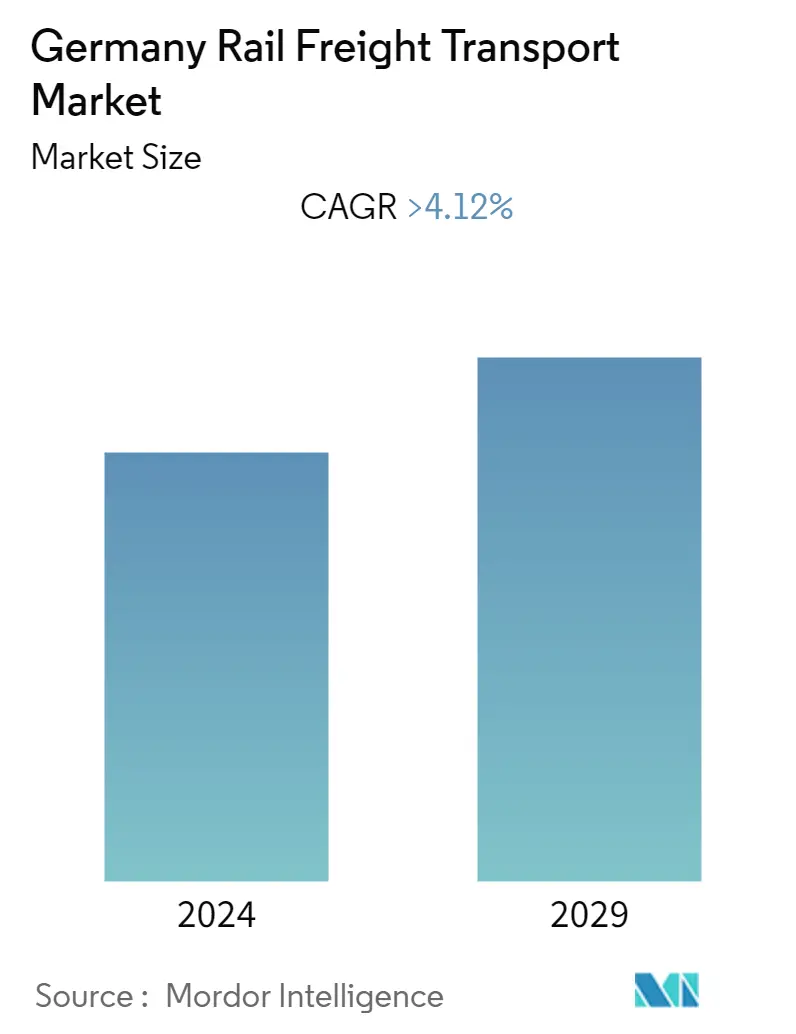
| Study Period | 2020 - 2029 |
| Base Year For Estimation | 2023 |
| Forecast Data Period | 2024 - 2029 |
| Historical Data Period | 2020 - 2022 |
| CAGR | 4.12 % |
| Market Concentration | Low |
Major Players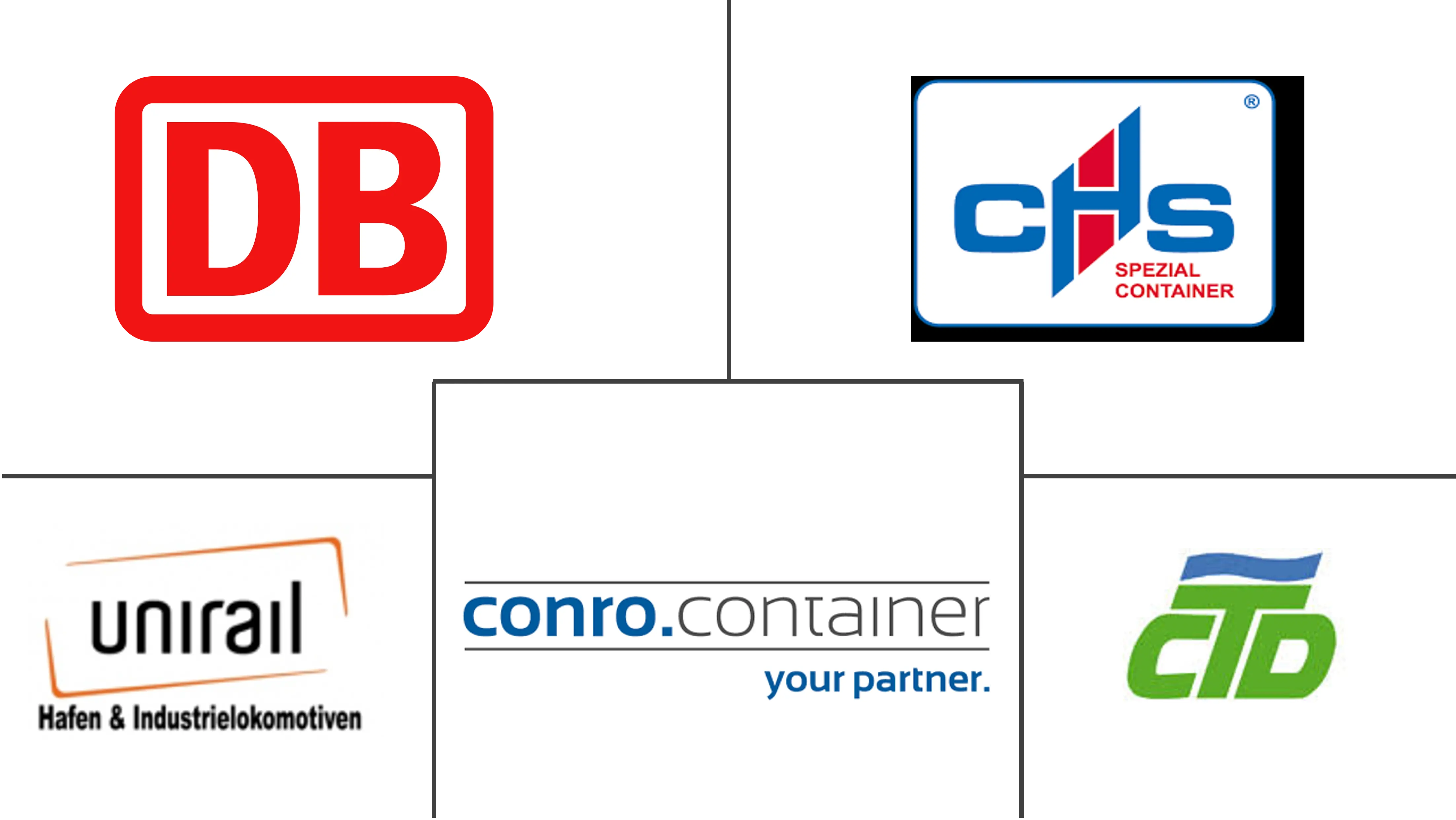
*Disclaimer: Major Players sorted in no particular order |
Germany Rail Freight Transport Market Analysis
The size of the Germany Rail Freight Transport Market is USD 7.89 billion in the current year and is anticipated to register a CAGR of over 4.12% during the forecast period. The market is driven by the huge rail freight volume passing through the country. Furthermore, the market is driven by the infrastructure growth in the country.
- According to the European Railway Performance Index, which ranks national European rail systems by the intensity of usage, service quality, and safety, Germany's rail system came in fourth place overall. Germany received very high marks for both the quantity and frequency of use by both passengers and freight, as well as for the level of service provided and safety. Additionally, Germany's cost-to-performance ratios outperformed the average for all of Europe, capturing comparatively high value in return for public expenditure.
- For sustainable mobility solutions, Germany will serve as a model market and a global market leader. This will have been done in the area of rail freight with a dual-track plan that supports both a further cut in emissions and the use of alternative drivetrains in the field of road haulage and, as important, the modernization and improvement of the rail freight sector's competitiveness. A key component of the German and European freight transportation systems will be rail freight. Its environmental friendliness will assist in meeting Germany's and Europe's carbon reduction goals, make freight transportation safer, and ease traffic congestion.
- Three German rail associations proposed increasing parcel rail transportation in the country. Some of the key actions include a toll exemption for combined transportation, the construction of more sidings, and the establishment of new combined transportation hubs. The three associations listed the three most important rail corridors that require increased capacity for parcel deliveries in a position paper. They are the lines that connect Nuremberg-Hannover in the country's center, Stuttgart-Berlin in the southwest to the northeast, and Hamburg-Munich in the north to the south. Furthermore, the three parties are requesting that these corridors be linked to the Rhineland/Ruhr region. The request is justified by the fact that parcel shipments are increasing year after year as a result of growing online trade, as the associations pointed out.
Germany Rail Freight Transport Market Trends
This section covers the major market trends shaping the Germany Rail Freight Transport Market according to our research experts:
Rising investment in infrastructure, digitalization and modal shift
- Eight railroad associations made their top requests known to the incoming federal government. Three billion euros per year for infrastructure, complete digitalization of the railroads by 2035, and a minimum of two-thirds of infrastructure expenditures in the rail network to hasten the modal shift. The eight railway industry associations recognise that the current government coalition has already increased the financial resources for the rail sector.
- However, the Allianz pro Schiene (Alliance for Rail), the umbrella organisation for transport authorities for local rail passenger transport BAG SPNV, the alliance for fair competition in passenger rail Mofair, the Network of European railways (NEE), the Mobility Association Germany (VCD), Verband der Bahnindustrie, the Association of German Transport Companies (VDV) and the Association for Freight Wagon owners (VPI) call for the future federal government to increase the pace and give rail priority.
- Through digitalization, rail infrastructure and operations are both becoming more dependable and efficient. Four points are highlighted by the German rail organisations to support this. First and foremost, they support a specific objective of digitising the whole German rail network by 2035.
- Digital Automatic Coupling has been proposed as the primary technology for increased railroad freight transit effectiveness (DAK). It would cost more than eight billion euros to refit the 450 000 freight cars across Europe in this decade. They emphasise in the document that businesses require financial support from the EU and the federal government to complete this mission.
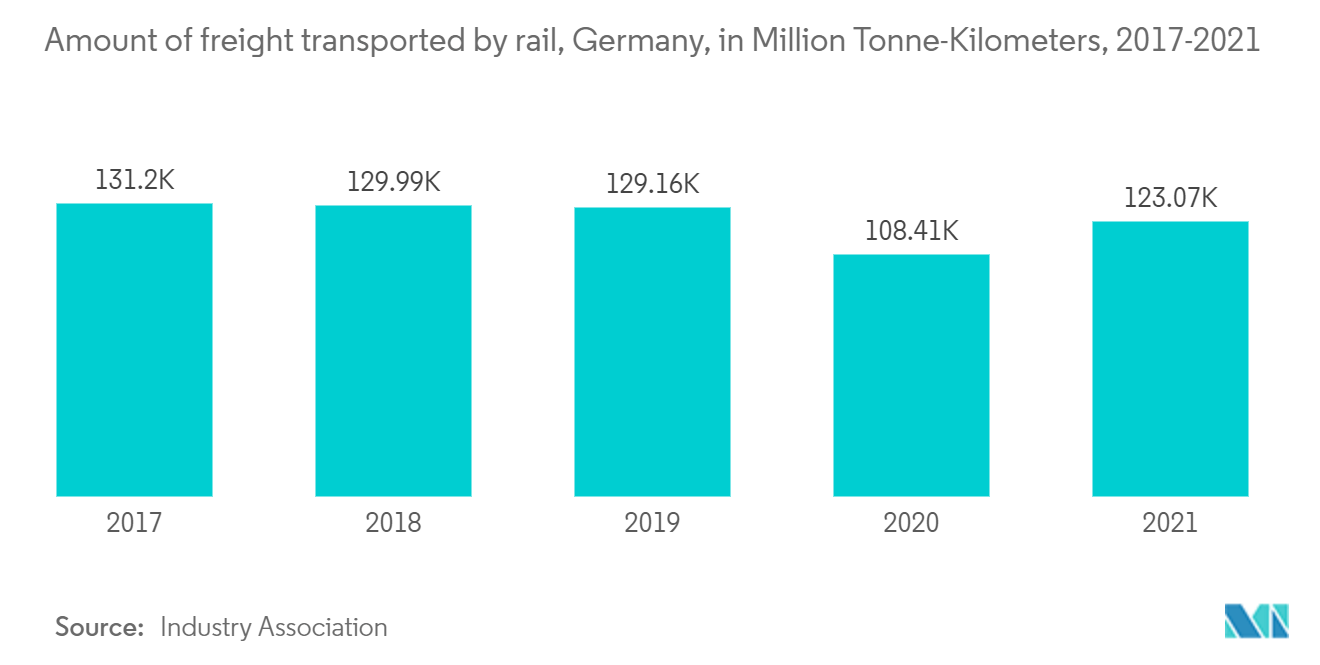
Germany to fund private rail connections to encourage rail freight
- In order to promote rail freight shipping, the German government is boosting the money available for private rail connection investments. In order to give businesses additional incentives to send their goods and products on the more ecologically friendly rail, the Federal Ministry of Transport and Digital Infrastructure (BMVI) is stepping up its efforts to improve business access to the rail network.
- Up to 50% of the costs for new and expanded connections, as well as for the reactivation and maintenance of current connections, will be funded by a federal funding scheme starting on March 1, 2021. From 2021 onward, the funds from the previous year will be increased by more than twice as much, reaching 34 million euros. The funds will later be increased to 49 million euros starting in 2024. The program has a five-year budget of 200 million euros overall. The Transport Ministry also wants to accelerate private investment in new access points through faster planning and fair cost sharing. Possible barriers that could discourage private investments are also among the main focal points. Private rail connections are linked to the rail network via a switch. The infrastructure companies, like DB Netz, are increasingly transferring their costs for operation and replacement, to private investors alone. For a fair distribution of costs, the BMVI issued a legal clarification in the General Railway Act.
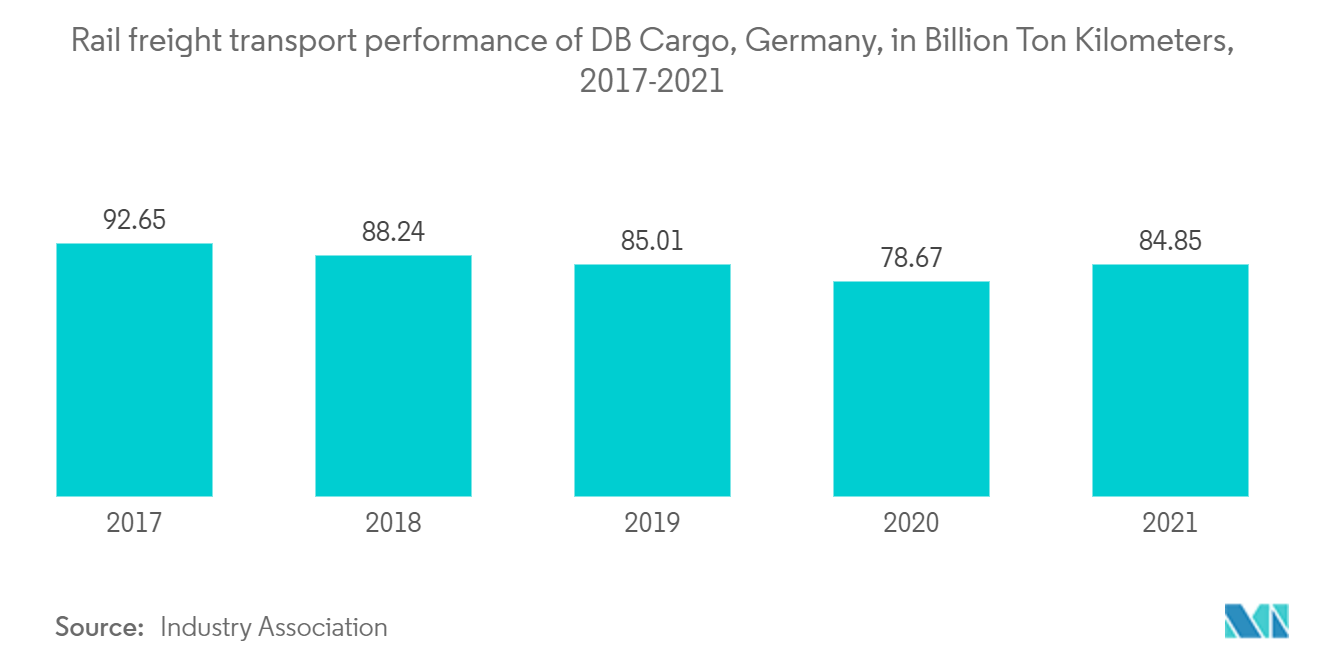
Germany Rail Freight Transport Industry Overview
The Germany Rail Freight Transport market is fragmented and is expected to grow during the forecast period due to the growth in the industrial trade, increased pressure on road transport, and several other factors. Deutsche Bahn AG, CHS Container Handel GmbH, concert logistics unirail GmbH, conro container GmbH, Container Terminal Dortmund GmbH (CTD), DB Cargo BTT GmbH, DeltaRail GmbH, Duomobile GmbH, EKB Container Logistik, EKOL Logistik GmbH are major market participants in Germany Rail Freight Transport Market
Germany Rail Freight Transport Market Leaders
-
Deutsche Bahn AG
-
CHS Container Handel GmbH
-
Concert logistics unirail GmbH
-
Conro container GmbH
-
Container Terminal Dortmund GmbH (CTD)
*Disclaimer: Major Players sorted in no particular order
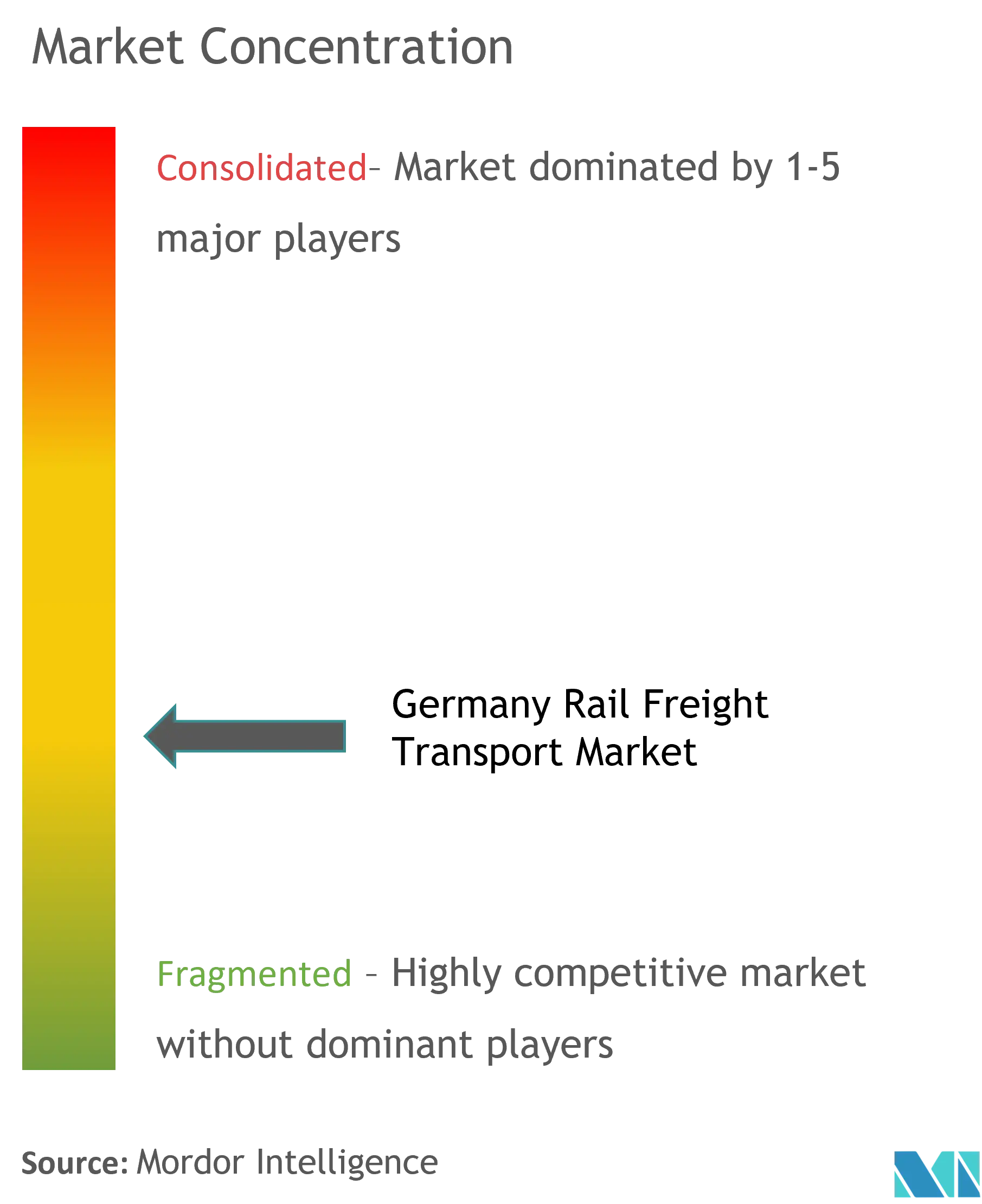
Germany Rail Freight Transport Market News
- January 2023- Delta Rail, a subsidiary of Modalis Group and a French multimodal operator, will launch a new rail freight service between Chalon-sur-Saone in eastern France and Duisburg. The new service will go live on February 28th. It will link the Delta Rail hub in Chalons and the VIIA terminal in Macon, France, to the Rhenania Worms AG terminal in Worms and the Samskip terminal in Duisburg, Germany.
- November 2022- Following a tender, Deutsche Bahn AG (DB) has concluded a long-distance rail development partnership with Siemens Mobility. The two companies will collaborate in the first half of 2023 to develop their vision for a next-generation high-speed train. Following the completion of the concept, a second tender for the development, construction, and certification of the new fleet is expected in the second half of 2023.
Germany Rail Freight Transport Market Report - Table of Contents
1. INTRODUCTION
- 1.1 Market Definition and Scope
- 1.2 Study Assumptions
2. RESEARCH METHODOLOGY
3. EXECUTIVE SUMMARY
4. MARKET DYNAMICS AND INSIGHTS
- 4.1 Current Market Scenario
-
4.2 Market Dynamics
- 4.2.1 Drivers
- 4.2.2 Restraints
- 4.2.3 Opportunities
- 4.3 Value Chain/Supply Chain Analysis
- 4.4 Technological Advancements
- 4.5 Government Regulations and Key Initiatives
- 4.6 Spotlight on the Effects of the Belt and Road Initiative (BRI)
- 4.7 Elaboration on Key Trade Agreements Related to Rail
- 4.8 Review and Commentary on the Freight Transportation Costs by Rail
- 4.9 Insights into Key End Users of the Rail Freight Sector
- 4.10 Impact of COVID-19 on the Market
5. MARKET SEGMENTATION
-
5.1 Service
- 5.1.1 Transportation
- 5.1.2 Services Allied to Transportation (Maintenance of Railcars and Rail Tracks, Switching of Cargo, and Storage)
-
5.2 Cargo Type
- 5.2.1 Containerized (Includes Intermodal)
- 5.2.2 Non-containerized
- 5.2.3 Liquid Bulk
-
5.3 Destination
- 5.3.1 Domestic
- 5.3.2 International
6. COMPETITIVE LANDSCAPE
- 6.1 Market Concentration Overview
-
6.2 Company Profiles
- 6.2.1 Deutsche Bahn AG
- 6.2.2 CHS Container Handel GmbH
- 6.2.3 Concert logistics unirail GmbH
- 6.2.4 Conro container GmbH
- 6.2.5 Container Terminal Dortmund GmbH (CTD)
- 6.2.6 DB Cargo BTT GmbH
- 6.2.7 DeltaRail GmbH
- 6.2.8 Duomobile GmbH
- 6.2.9 EKB Container Logistik
- 6.2.10 EKOL Logistik GmbH*
- *List Not Exhaustive
7. FUTURE OF GERMANY RAIL FREIGHT TRANSPORT MARKET
8. APPENDIX
** Subject To AvailablityGermany Rail Freight Transport Industry Segmentation
Rail freight transport refers to the haulage of a freight train for commercial gain by one or more rail freight locomotives on a public railway within the Republic for the purpose of transporting cargo all or part of the way between the shipper and the intended destination as part of the logistics chain. The report covers the complete background analysis of the Germany Rail Freight Transport Market, including the assessment of the economy and contribution of sectors in the economy, market overview, market size estimation for key segments, emerging trends in the market segments, market dynamics, and geographical trends, and COVID-19 impact.
The Germany Rail Freight Transport Market is Segmented By Cargo Type (Containerized (Intermodal), Non-containerized, and Liquid Bulk), Destination (Domestic and International) and By Service Type (Transportation and Services Allied to Transportation). The report offers market size and forecasts in value (USD billion) for all the above segments.
| Service | Transportation |
| Services Allied to Transportation (Maintenance of Railcars and Rail Tracks, Switching of Cargo, and Storage) | |
| Cargo Type | Containerized (Includes Intermodal) |
| Non-containerized | |
| Liquid Bulk | |
| Destination | Domestic |
| International |
Germany Rail Freight Transport Market Research FAQs
What is the current Germany Rail Freight Transport Market size?
The Germany Rail Freight Transport Market is projected to register a CAGR of greater than 4.12% during the forecast period (2024-2029)
Who are the key players in Germany Rail Freight Transport Market?
Deutsche Bahn AG, CHS Container Handel GmbH, Concert logistics unirail GmbH, Conro container GmbH and Container Terminal Dortmund GmbH (CTD) are the major companies operating in the Germany Rail Freight Transport Market.
What years does this Germany Rail Freight Transport Market cover?
The report covers the Germany Rail Freight Transport Market historical market size for years: 2020, 2021, 2022 and 2023. The report also forecasts the Germany Rail Freight Transport Market size for years: 2024, 2025, 2026, 2027, 2028 and 2029.
Germany Rail Freight Transport Industry Report
Statistics for the 2024 Germany Rail Freight Transport market share, size and revenue growth rate, created by Mordor Intelligence™ Industry Reports. Germany Rail Freight Transport analysis includes a market forecast outlook to 2029 and historical overview. Get a sample of this industry analysis as a free report PDF download.



